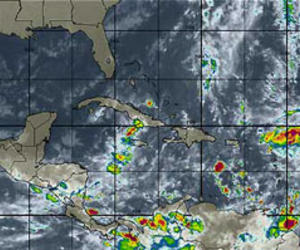Cuba, Pioneer of Meteorology in the Caribbean
- Submitted by: manso
- Society
- 05 / 28 / 2011

Mildrey Ponce. Located on one of the heights surrounding Havana Bay, a beautiful white sphere is patently obvious to navigators, visitors and local residents.
Tucked away under the singular globe of concrete is nothing less than the meteorological radar of Cuba’s National Observatory.
Since the seventeenth century there were people who, without having any knowledge of meteorology, took notes when a hurricane hit anywhere in Cuba.
In the majority of cases, notes were made by office clerks of the Town Hall, sugar mill owners and people with some learning who gave an indication of the time it lasted, damages, deaths and missing persons.
The eminent scientist of Havana, Andrés Poey, founded in 1855 the country’s first meteorological observatory. It lasted until 1869 when the Spanish metropolis closed it after its promoter embraced pro-independence ideals.
This first observatory was followed by the Observatory of the Belén Academy, whose director was the Catalan priest Benito Viñes. Considered the Prince of Tropical Meteorology, he was the architect of the first warning of a hurricane in the history of tropical meteorology, published by Havana’s daily newspapers on September 12, 1875.
With the beginning of the Republic in the twentieth century, Cuba’s meteorological service became the responsibility of the National Observatory, which in 1908 was located on the hill of Casablanca. It was distinguished by its silvery dome from which emerged an optical telescope.
The second director of the National Observatory was Lieutenant Commander and engineer José Carlos Millas, who contributed to improving knowledge about the tropical cyclone.
Millas carried out research that led him to consider that the hurricane season cycle is between June and November, as it is still considered to be today. In addition, he obtained other statistical results.
In those days, the U.S. Weather Service consulted Millas about everything related to the course of hurricanes, as the Cuban had developed several theories on the formation, development and movement of hurricanes which were considered very advanced for that time. This was when several meteorological observation stations, under supervision of the Navy, existed in Cuba and in some Caribbean countries.
The October 1944 hurricane was the first atmospheric phenomenon forecasted through the use of data coming from radiosondes launched from the National Observatory.
Cuba was the second Latin American country, preceded by Mexico, which used this new technique for research.
In 1965, the National Observatory, coming under the Navy, joined the Meteorology Department of the Science Academy. This gave way to the present-day Meteorological Institute (INSMET for its Spanish acronym), also located in Casablanca, in the capital’s eastern area.
Dr. Mario Rodríguez Ramírez, founder of Cuba’s Meteorological School, played a leading role during this period which made way for the integration of a real National Meteorological System with civil jurisdiction.
With the development of technology in the communications field, it was faster and more efficient for information to reach all countries of the continent and the Caribbean.
Currently, Cuba has the most developed meteorological service in the Caribbean, earned mainly through being supported by a long tradition.
Source: Cubanow
Comments